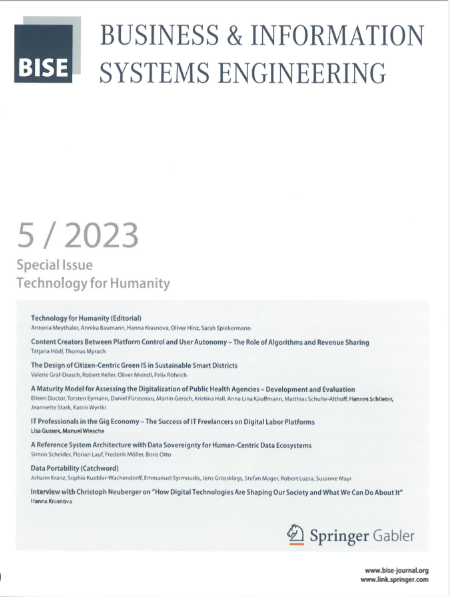社交媒体分析的数据质量多维模型
IF 10.4
3区 管理学
Q1 Computer Science
引用次数: 0
摘要
社交媒体平台已经成为企业获取有用信息的新来源。确保社交媒体的商业价值首先需要分析相关数据的质量,然后开发实用的商业智能解决方案。本文旨在为社会商业智能(SoBI)构建高质量的数据集。提出的方法提供了一个集成的和动态的方法来识别每个分析领域的相关质量度量。该方法采用一种新颖的多维数据模型来构建具有各种质量指标影响测度的多维数据集。在这个模型中,质量度量和指标被组织在两个主轴上。第一个涉及要提取的事实类型,即:帖子、用户和主题。第二个轴是指要评估的质量视角,即:可信度、声誉、有用性和完整性。另外,质量多维数据集包括用户角色维度,这样就可以根据用户业务角色评估质量度量。为了证明这种方法的实用性,作者将他们的方法应用于两个独立的领域:汽车业务和自然灾害管理。结果表明,社交媒体数据的数量和质量之间的权衡主要集中在一小部分相关用户身上。因此,数据过滤可以很容易地执行,只需根据所提出的方法确定的质量指标对帖子进行排名。据作者所知,这是第一个将分析事实的提取和社交媒体数据质量的评估整合在同一框架中的方法。本文章由计算机程序翻译,如有差异,请以英文原文为准。

A Data Quality Multidimensional Model for Social Media Analysis
Abstract Social media platforms have become a new source of useful information for companies. Ensuring the business value of social media first requires an analysis of the quality of the relevant data and then the development of practical business intelligence solutions. This paper aims at building high-quality datasets for social business intelligence (SoBI). The proposed method offers an integrated and dynamic approach to identify the relevant quality metrics for each analysis domain. This method employs a novel multidimensional data model for the construction of cubes with impact measures for various quality metrics. In this model, quality metrics and indicators are organized in two main axes. The first one concerns the kind of facts to be extracted, namely: posts, users, and topics. The second axis refers to the quality perspectives to be assessed, namely: credibility, reputation, usefulness, and completeness. Additionally, quality cubes include a user-role dimension so that quality metrics can be evaluated in terms of the user business roles. To demonstrate the usefulness of this approach, the authors have applied their method to two separate domains: automotive business and natural disasters management. Results show that the trade-off between quantity and quality for social media data is focused on a small percentage of relevant users. Thus, data filtering can be easily performed by simply ranking the posts according to the quality metrics identified with the proposed method. As far as the authors know, this is the first approach that integrates both the extraction of analytical facts and the assessment of social media data quality in the same framework.
求助全文
通过发布文献求助,成功后即可免费获取论文全文。
去求助
来源期刊

Business & Information Systems Engineering
工程技术-计算机:信息系统
CiteScore
11.30
自引率
7.60%
发文量
44
审稿时长
3.0 months
期刊介绍:
BISE (Business & Information Systems Engineering) is an international scholarly journal that undergoes double-blind peer review. It publishes scientific research on the effective and efficient design and utilization of information systems by individuals, groups, enterprises, and society to enhance social welfare. Information systems are viewed as socio-technical systems involving tasks, people, and technology. Research in the journal addresses issues in the analysis, design, implementation, and management of information systems.
 求助内容:
求助内容: 应助结果提醒方式:
应助结果提醒方式:


